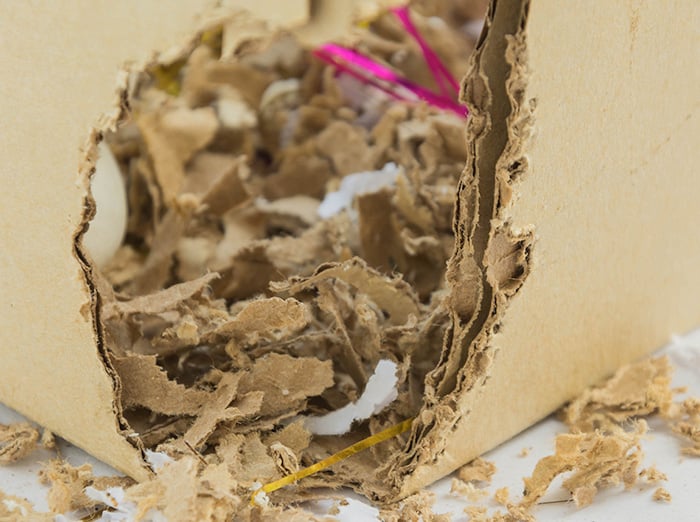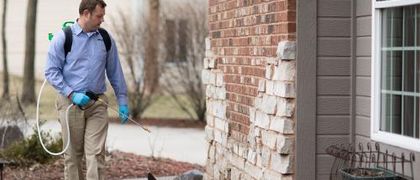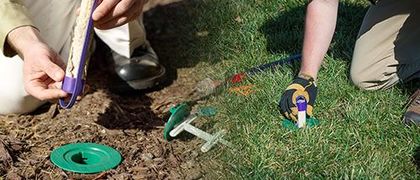Late Summer Mice Problems
When you think about mice invading your home, you probably picture the cold months of fall and winter, right? Perhaps you think of little mice sitting around a burning barrel, warming their hands, wishing they had a warm place to live—like your home. While the image is absurd, mice enter homes when the cold weather rolls in. But fall and winter aren't the only times they get in. Rodents in Omaha, Kansas City, Des Moines, and throughout the Midwest can get into homes at any time of year. At the end of summer, many homeowners report finding mice in their sheds, garages, basement, and—believe it or not—floating in their toilets.
At Miller Pest & Termite, we’ve had numerous calls from homeowners who don't understand why they’re dealing with mice while it’s still warm outside, and if you’re in a similar situation, we’re here to help. In today’s blog, we’ll explain why mice get into homes in late summer, how they get in, and what you can do to prevent a full-blown infestation before the cold weather moves in.

Why mice are a problem in late summer
What makes a mouse want to come inside during the summer? Don't they have lovely, warm places to live outdoors this time of year? These rodents infest homes over the summer for a couple of good reasons.
- Searching for food
As natural food sources start to dwindle in late summer, mice will search for more reliable food options. Unfortunately, your home, with its stocked cabinets and pantry, is a temptation they cannot resist. Of course, pet food and garbage will also attract these pests. - Growing population
Mice breed all year round, but as late summer progresses, the mouse population expands. With limited outdoor resources, they need to spread out and find new nesting areas, which leads them to infest homes. - Preparing for cooler weather
Even though it’s not cold yet, mice instinctively prepare for winter, starting at the end of summer. In late summer, mice look for secure locations to store food and build nests for the colder seasons ahead. Your shed, garage, basement, or attic could be the spot they’re looking for.
How mice get into Midwest homes
- General cracks and gaps
Mice slip through minor cracks or gaps in your home’s exterior. They'll squeeze in or gnaw their way around windows and doors, cracks in your foundation, and spaces where pipes or wire conduits enter your house. - Vents and chimneys
If they’re not properly sealed or screened, vents, such as those for your dryer or attic, can provide easy access for mice. A chimney is another potential entry point, especially if it isn't capped or has no damper. - Gaps in cellar doors or crawl space doors
If you have a cellar or crawl space door outside your house, you may have a unique vulnerability. Doors not sealed well can allow a little mouse (or several) to crawl inside. - Garage doors
If your garage door doesn’t seal tightly to the floor or has small gaps along the edges, mice can easily slip under or around it. Once inside the garage, it’s only a short trip to the rest of your home. - Rotted wood
In nature, mice live in logs, stumps, and tree cavities. They make these natural wood homes larger by gnawing on the wood. They will do the same to a home's wood if it is softened by moisture damage. When they chew on wood, they can make a hole and slip into your wall voids.
When a mouse gets into your home, you may hear it skittering and squeaking noises in your walls or coming from your attic—but there is a good chance you won't hear it. A mouse can be—well—as quiet as a mouse. Therefore, it is a good idea to know how to detect signs of mouse activity inside your home.
Signs you have a mouse problem
Mice are nocturnal. This means you might not see them during the day. However, they will leave plenty of evidence that they’re around. Here are some signs of mice to watch out for:
- Mouse droppings
Mouse droppings are small and dark-colored. They look a bit like dark grains of rice. You may find them in your pantry, along baseboards, or near food sources. You can also find them in secluded spaces. For instance, you may find them sprinkled on your attic insulation. - Nests
Mice build nests in attics and other storage areas, wall voids, under cabinets, and behind appliances – anywhere they can avoid detection. Mouse nests typically look like small, messy bundles of shredded materials, such as attic insulation, fabric, and paper they steal from the house. They might also use plant matter they bring indoors. - Gnaw marks
Mice chew on just about anything to keep their teeth sharp. Look for gnaw marks on food packaging, cardboard boxes, wires, pipes, stored Christmas decorations, clothing, insulation, drywall, etc.
These are the subtle signs of an infestation. If mice are allowed to stay in your home, the signs will grow, and you'll start to see (and smell) other less subtle signs.
How to prevent mice from infesting your home
There are ways to keep mice from entering your cellar, basement, pantry, kitchen, attic, and other places you don’t want. If you tackle this, you must start by correcting the mentioned areas. Here are a few rodent prevention tips to get you started:
- Seal potential entry points.
- Secure all food options, including garbage.
- Reduce clutter and store items in durable plastic bins with tight-fitting lids.
- Keep up with yard work.
- Pick up dog waste.
- Harvest your garden and pick up fruit that has fallen off trees.
- Install new door sweeps and weatherstripping.
- Make sure all vents are protected.
You can deter mice if you're willing to do the hard work, but there is an easier—and more effective—way to keep mice out. It's called Miller Guard.
Why you should consider Miller Guard
Preventing mice from entering your home is crucial, but this can be a big job. That’s where Miller Guard can help. Our comprehensive home pest control plan is designed to protect your home from mice and other pests year-round. With the Miller Guard plan, you’ll receive:
- Regular inspections
Our trained technicians will thoroughly inspect your home for potential entry points and signs of mice. We’ll identify any areas that need attention and take steps to secure them. - Preventative treatments
We use effective treatments to create a barrier around your home. This will deter mice and other pests from coming inside. These treatments are designed to be long-lasting so you can enjoy peace of mind even during peak pest seasons. If necessary, we’ll treat inside the home, too. - Ongoing support
If you ever have a pest problem in between services, we’re just a phone call away. Our team is always ready to provide no-cost treatments for covered pests.
By enrolling in Miller Guard, you’re taking a proactive approach to pest control. Instead of waiting for mice to become a problem, we’re helping you stop them before they get in. This protects your home and saves you the time and hassle of dealing with an infestation on your own. Check the plan features below or connect with us via phone or form today!
Ongoing Home Pest Control Recommendation
Miller Guard
Our signature Miller Guard pest control plan stands out in the industry by giving you Full Pest Coverage and Zero hidden fees. It is designed to eliminate and prevent insect and rodent problems by targeting pest entry and exit points for maximum effectiveness. It includes an initial premium interior application, exterior applications, web removal, and wasp nest removal.
- Ongoing Preventive Services
- 29 Pests & Services Covered
- Initial Premium Interior Application
- Exterior Applications
- Rodent Control
- Wasp Nest Removal
- Cob-Web Removal
- 1-Year Service Agreement
Starting at:
$4999A Month
Free Quote Or Call (515) 518-8864

Additional Miller Guard Details
Pests Covered: Asian Beetles, Boxelder Bugs, Carpenter Ants, Carpet Beetles, Centipedes, Clothes Moths, Drain Flies, Earwigs, Fleas, Fruit Flies, Grain Beetles, Hornets, House Ants, Indian Meal Moths, Mice, Millipedes, Pill Bugs, Rats, Roaches**, Silverfish, Spiders***, Stink Bugs, Wasps, Weevils, Yellow Jackets
Service frequency will vary based on geography. The Miller Guard program does not include the following pests: honey bees, flies, lice, dust mites, mosquitoes, exterior ticks, ornamental/turf pests, slugs, snails, termites, wildlife, birds, and brown recluse spiders.
- Pricing does not include initial fee
- Must have credit card on file
**American, German & Oriental
*** Venomous & Non-venomous
Get Help Now!










